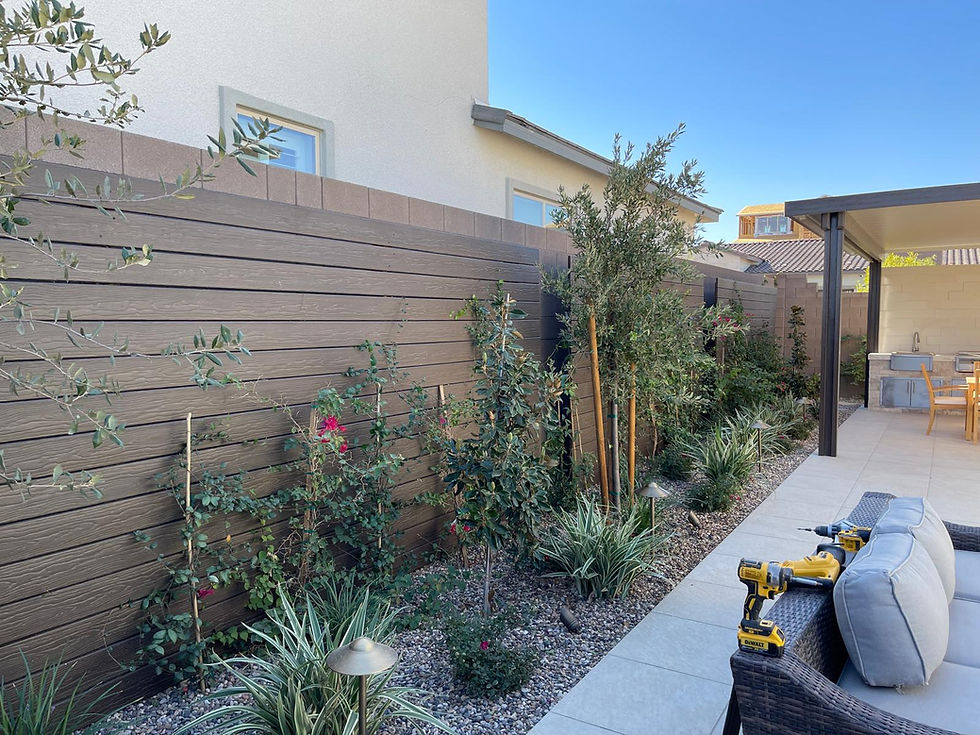The Advantages of Composite Wood Decking: A Comparative Analysis
- Living Water Team

- Feb 19
- 3 min read
When it comes to home improvement and outdoor design, your choice of materials can significantly impact both the beauty of your space and its functionality. Decking and cladding enhance the exterior of your home, enabling you to enjoy the outdoors comfortably. Composite wood decking has become a favored option among homeowners, thanks to its durability, sustainability, and low maintenance needs. This article dives into the numerous benefits of composite wood decking and cladding compared to traditional wood, providing valuable insights to help you make the right choice for your next project.

Understanding Composite Wood Decking
Composite wood decking combines recycled wood fibers and plastic, creating a versatile material that mimics the look of natural wood. This innovative blend offers many advantages over traditional wood, including resistance to rot and pests. For example, composite decking can last up to 25 years or more with proper care, while traditional wood may need replacement within 10 years, depending on its exposure to the elements.
Durability and Longevity
One of the standout benefits of composite wood decking is its exceptional durability. Unlike regular wood that can rot, warp, or splinter, composite materials are engineered for resilience. This durability means homeowners can enjoy their outdoor spaces without worrying about constant repairs or updates.
Key points:
Composite decking can resist moisture, UV rays, and insects, helping maintain its appearance for years.
In contrast, traditional wood requires annual applications of sealants and stains, which can add to your costs. Studies show that homeowners might spend an additional 10% to 15% of their decking cost each year on maintenance alone.

Low Maintenance Requirements
Composite wood decking stands out for its low maintenance needs. Homeowners can save time and effort by choosing this material. Unlike traditional wood, which demands periodic sanding, painting, or staining, composite decking only needs occasional cleaning with soap and water.
Families with busy schedules will appreciate not having to spend weekends on deck maintenance. In fact, studies suggest that homeowners who opt for composite decking can reduce maintenance hours by 50%, allowing them more time to relax and enjoy their outdoor space.
Environmental Considerations
Sustainability plays a crucial role in today's home improvement decisions. Many composite wood decking brands use recycled materials, which significantly lessens the pressure on virgin wood sources. This choice positively impacts the environment, helping to combat deforestation.
By selecting composite materials, you are contributing to eco-friendliness. For instance, homeowners choosing this option help save approximately 2.5 billion pounds of wood waste annually. On the other hand, traditional wood can lead to habitat destruction if sourced irresponsibly.

Aesthetic Appeal
While functionality is important, aesthetic beauty is equally crucial. Composite wood decking comes in a broad range of colors, textures, and finishes that effectively replicate the charm of real wood. This variety allows homeowners to achieve their desired vision for outdoor areas without compromising on quality.
Additionally, composite boards offer consistent color and grain patterns, which can be a challenge with traditional wood. Homeowners often spend hours trying to find matching boards, while composite options deliver a polished and cohesive look right from the start.
Cost-Effectiveness
When you examine the total cost over time, composite wood decking can be a financially smart option. Although the initial price may be higher than standard wood, the reduced maintenance and longer lifespan typically lead to lower overall costs.
For instance, a homeowner who spends $3,000 on traditional wood might face up to $500 in annual maintenance costs. In contrast, spending $4,500 on composite decking could lead to minimal maintenance expenses, resulting in savings over the lifecycle of the product.
Safety Features
Safety is a key factor to consider when choosing decking materials. Composite wood products tend to be slip-resistant and do not splinter, making them a safer choice, especially for homes with children or pets. In contrast, traditional wood can develop sharp splinters and become slippery when wet, posing risks for injuries.
With composite decking, homeowners can take comfort in knowing their outdoor areas are designed with safety in mind.
A Lasting Choice for Homeowners
Choosing composite wood decking over traditional options presents clear advantages. From enhanced durability and minimal maintenance requirements to eco-friendly benefits and safety features, composite materials offer a modern and reliable solution. Whether upgrading an existing deck or constructing a new one, consider composite wood decking for a better outdoor experience that aligns with contemporary values of sustainability and efficiency.



Comments